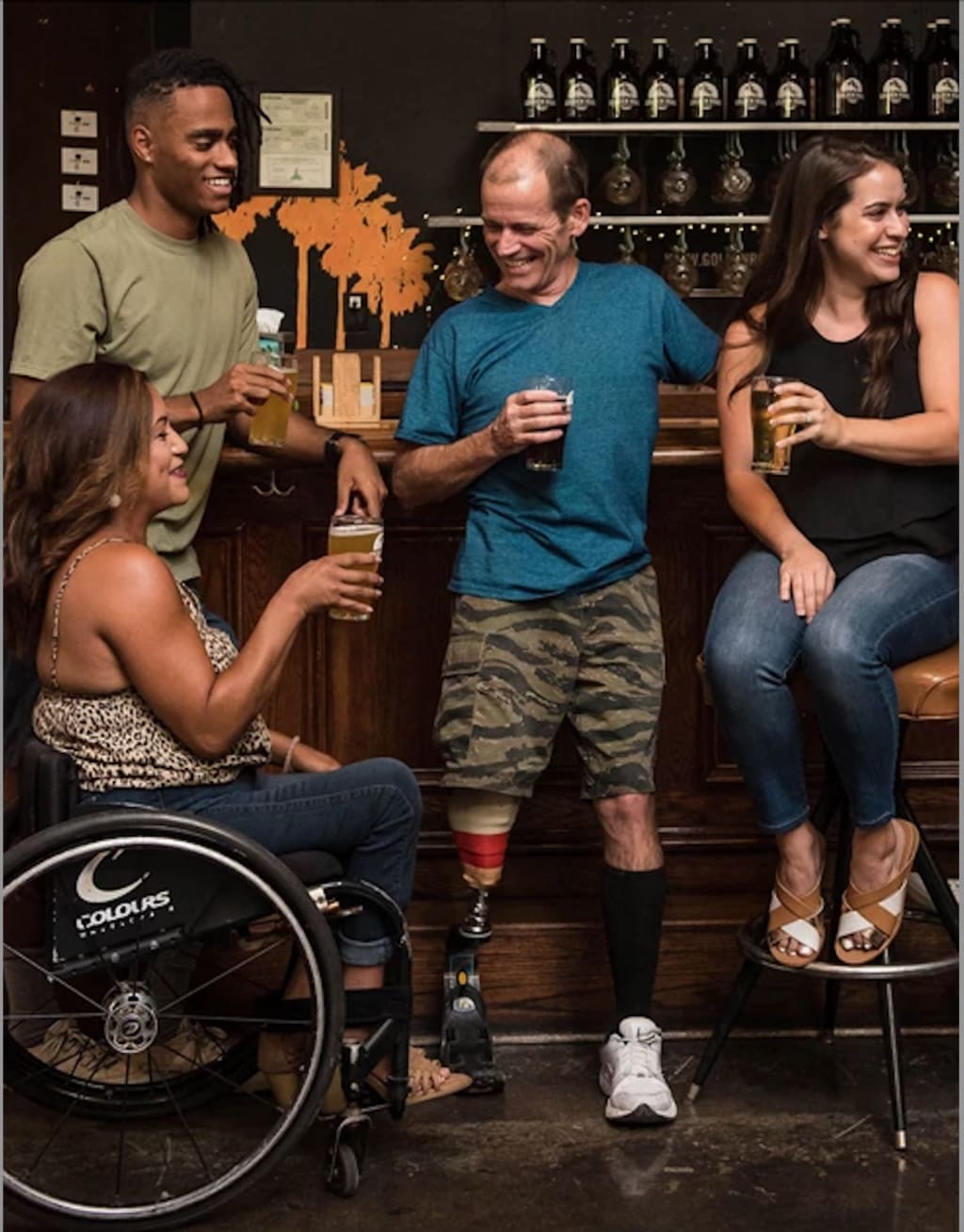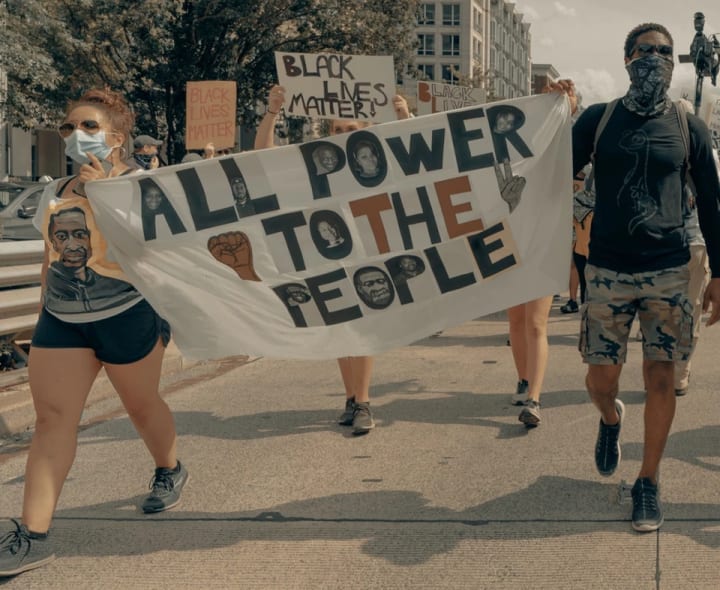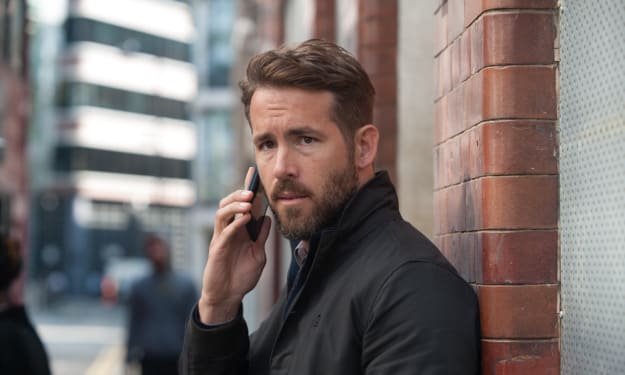Value Your Rare
A "Living Rare" editorial about valuing what makes you rare and how to get involved through activism, advocacy, and storytelling.

As members of the rare disease community, it's easy to feel isolated, unheard, invisible and exploited. But the truth is: everyone is rare. All around the world, the people of the rare disease community have united and as a result, we are no longer isolated, ignored, or invisible. It is time that we recognize the value of our collective lived experiences and demand stakeholdership throughout the rare disease ecosystem. The rare disease community has awakened; and through this awakening, the people around the world are empowered to value their stories, experiences, and insights.
A Glimpse into the Rare Disease Experience
There are currently between 6,000-8,000 rare diseases documented in various databases, with an average of 250 new conditions being reported in medical literature each year (Raconteur, 2019). Though each of those diseases are individually rare, as a collective whole, people with rare diseases are relatively common - approximately 300-400 million people worldwide are living with a rare disease of some sort (Ngeungang Wakap, 2020).
Rare diseases are often poorly understood, difficult to study, and tricky to spot. As a result, many patients remain either undiagnosed or misdiagnosed. Those who enter the diagnostic odyssey on average wait up to 7 years before receiving the correct diagnosis (Isabel Healthcare, 2015). Patients can also incur life-altering physical, mental, and financial damage during those years of searching for an accurate diagnosis.
When diseases are left undiagnosed and untreated, the costs to the patient can be severe and often irreversible - further disease progression, increased risk of developing co-morbid conditions, higher mortality risks, and decreased quality of life (GAO, 2021).
Even with a diagnosis, the obstacles continue. Of the thousands of known rare diseases, 90-95% of them still don't even have reliable treatment options available (Raconteur, 2019). The impact of limited research, social awareness, and understanding of rare diseases manifest in a variety of different ways. The myriad of hurdles a person living with a life-altering rare condition often must encounter includes, but is not limited to, ableism, limited understanding from loved ones, dismissive healthcare providers, policies that exploit the rare disease community, and so much more.
According to a 2021 Government Accountability Office report,"in part because little is known about many rare diseases, it is often the patients and their families who bear the burden of seeking a diagnosis, identifying and seeking necessary resources, and developing support networks for those with similar problems - efforts that can add to both direct and indirect costs of the disease" (GAO, 2021).
Because the burden of seeking a diagnosis, identifying methods of support and survival rest on the shoulders of patients and caregivers, patients and families have unified in support of one another through various community-based collaborations. As more of these collaborations bud, develop and deploy solutions back into the communities, the people of the rare disease community, along with their caregivers and loved ones, are now facing several options to professionalize their positions as either community-based activists or community-focused advocacy allies.
Activism & Advocacy

Both activists and advocates are vital for spreading awareness, progressing research and development for new treatments, changing harmful legislative policies and industry standards, and breaking through institutional and historical anchors that limit the socio-economic growth of the rare disease community.
Although some may use the words 'activism' and 'advocacy' interchangeably, they are distinct roles, both of which are crucial in generating positive change for the rare disease community.
Where do you fit in?
An advocate is typically a person who functions outside of the rare disease community, but who advocates, nonetheless, for patients with one or more rare diseases and their families. Advocacy-based nonprofit organizations and other community-focused projects tend to be generated, designed, and executed by advocates.
On the other hand, an activist is someone within the community with their own real-world lived experiences. Rare disease activists, also commonly referred to as community-based activists, use the insights from their personal lived experiences to help design solutions with allied stakeholders that have a positive real-world impact on the people of the community. If you live with a life-altering rare disease, and you are looking to improve the lives of people with similar lived experiences as your own, then you may just want to explore community-based activism.
Many successful community-focused projects include collaborations and partnerships between advocacy-based and community-based stakeholders. Other more recent successful collaborations are taking place between industry-based advocates (often referred to as community-focused "allies") and community-based activists, as evidenced by several RAM Collaborations. As you may have noticed, both types include collaborations with community-based activists. Whether a collaboration with community-based activists is designed and executed in partnership with advocacy-based or industry-based advocates, the one thing all sides have in common is that they are trying to improve the overall quality of life of the people in the rare disease community of interest. Collaborations (that model RAM Collaborations) allow for all involved stakeholders across the rare disease ecosystem to have their unique perspectives, ideas, and skillsets represented and applied to solutions that result in a positive real-world impact.
Because the efforts of an activist are so valuable to the rare disease ecosystem (activists are literally lived-experience experts), naturally there's a fair market value for community-based expert insights.
While monetary values fluctuate based on current market trends, knowing and budgeting projects based on the current fair market value (FMV) is necessary to avoid exploiting people of disenfranchised communities. There are several stages of growth that an activist goes through as they evolve into a professional stakeholder and ultimately as a community-based Key Opinion Leader (KOL) - but that is a topic for another article. As of 2021, RAM's Fair Market Value of Rare Disease Insights collaboration updated a 2020 FMV analysis which established values for different roles (listed from the least to most community-based/community-focused experience typically needed). From "Storytellers" to "Diversity, Equity, and Inclusion (DEI) Experts" - you can learn more about these roles and their FMV rates here. Given the latest changes in market trends, RAM's Fair Market Value of Rare Disease Insights collaboration expects to publish 2022's values this upcoming Fall/Winter season.
Rare disease storytelling, while valuable, can be triggering!
It’s extremely important to understand that when someone chooses to share their personal story about their rare disease experiences and traumas, they are reliving a part of their life that they may not have completely healed from yet. The process of sharing traumatic stories with a group of strangers, or even a group of friends, can be emotionally triggering, an experience that lingers long after the presentation of the story. Because most stories may have parts that have been originally hidden on purpose for the sake of survivability (let's not forget that we still live in an ableist society that actively discriminates against people living with disabilities and medical complexities), it is important that the person not be pressured to share their story before they express being ready to do so.
If a person expresses any hesitance in answering a question or in sharing any aspect of their story, this is an emotional defense mechanism that must be preserved and respected by all participating stakeholders. It can take a huge toll on a person's overall mental well-being for a traumatic event to be spotlighted in a public way before they are ready to truly share their story.
Once a person's personal story is published on the internet, it's out there for good and in a way seizes to be completely owned by the person to whom the story originally belongs to. It becomes available for anyone to see, copy, save and share, including family, friends, co-workers, and even people with not the best of intentions. Many platforms and organizations take complete ownership of the stories and images submitted through their websites, allowing them to edit, reproduce and publish them as they see fit, in any manner without the person's permission.
For those who have decided to embrace advocacy or activism, going public and telling the world about their lived experiences can positively impact the millions of people that make up our beautiful, naturally diverse global community. It is absolutely empowering to see that you are not alone and that someone just like you has chosen to tell the world about an experience that matches your own. Because community-based activism can lead a person with a compelling lived experience towards the path of becoming a professional key opinion leader (KOL), the act of choosing to value your personal lived experiences by sharing it on an open platform or in a closed platform (where your time and insights are valued) can be an incredibly healing experience in itself. Embracing community-based activism can help a person to find their voice, better process the experience of their rare disease story, and take official ownership of their narrative in a positive way.
A Bit About Me
I first began telling my story in 2017, shortly after enduring a long, arduous, and painful process of receiving multiple rare disease diagnoses. At the end of those years of battling with doctors, having my symptoms and concerns invalidated, and enduring unnecessary treatments and procedures, I realized something distressing - I had arrived at a diagnosis despite the healthcare practitioners I saw.
What had truly helped me arrive at an official diagnosis was the help I received from members of the rare disease community and my insistence on being my own advocate, battling ignorance and biased assumptions from the healthcare practitioners I sought guidance from. I knew that something needed to change, and I wanted to do my part to change it, but I had no skills or know-how to offer. I had nothing to give besides my own story, but I soon realized that was all I needed to start making a difference. I chose to be my own advocate and now I take pride in being a community-based activist.
In closing, if you have a personal rare disease lived experience, you don't need a particular skillset for your voice to be worth hearing. You already have the only qualification you need: your lived experiences. You are already a valuable piece of the rare disease community. And if you’re not ready for that yet, that is more than okay! Please do not feel any obligation in telling the personal details of your story, before you are ready. You may never feel ready to share the personal details of your story and that is also okay. There are several other ways to contribute to the growth and unification of our beloved global community. You are not alone. If you would like to get involved, reach out.
If this article compels you to learn more about community-based activism, contact us. Include my name (Aston Martinez) in your message, a bit about why you are reaching out and our team will connect us. We can empower the people of our community together!
*Note: I originally wrote and published this as a Living Rare editorial. It is now being shared here as well with permission from the Living Rare editorial board. If you'd like to check out the original article or read my other Living Rare editorials, click here.
References and Resources
Isabel Healthcare Ltd. (2015). Rare Diseases and Misdiagnosis [Infographic]. Isabel Healthcare. https://info.isabelhealthcare.com/blog/rare-diseases-and-misdiagnosis
Nguengang Wakap, S., Lambert, D.M., Olry, A. et al. Estimating cumulative point prevalence of rare diseases: analysis of the Orphanet database. Eur J Hum Genet 28, 165–173 (2020). https://doi.org/10.1038/s41431-019-0508-0
Raconteur. (2019). Rare but Collectively Common [Infographic]. Visual Capitalist. https://www.visualcapitalist.com/which-rare-diseases-are-the-most-common
RAM. (2022). Collaborations. Rare Advocacy Movement. Retrieved from https://www.rareadvocacymovement.com/collaborations
RAM. (2022). Everyone is rare. Rare Advocacy Movement. Retrieved from https://www.rareadvocacymovement.com/everyoneisrare
RAM. (2022). Fair market values for Rare disease community insights. Rare Advocacy Movement. Retrieved from https://www.rareadvocacymovement.com/fairmarketvalues
Rare diseases FAQ. Genome.gov. (2020). Retrieved March 8, 2022, from https://www.genome.gov/FAQ/Rare-Diseases
United States Government Accountability Office (GAO), & Dicken, J. E., Rare diseases: Although Limited, available evidence suggests medical and other costs can be substantial: Report to congressional committees (2021). https://www.gao.gov/assets/gao-22-104235.pdf
About the Creator
Aston Martinez
I'm a mom of three that has a burning passion for writing and activism. I'm currently a copywriter for Habit Nest, but I'm on Vocal to branch out further and put more of my own personal work out there. I hope you enjoy them!






Comments
There are no comments for this story
Be the first to respond and start the conversation.